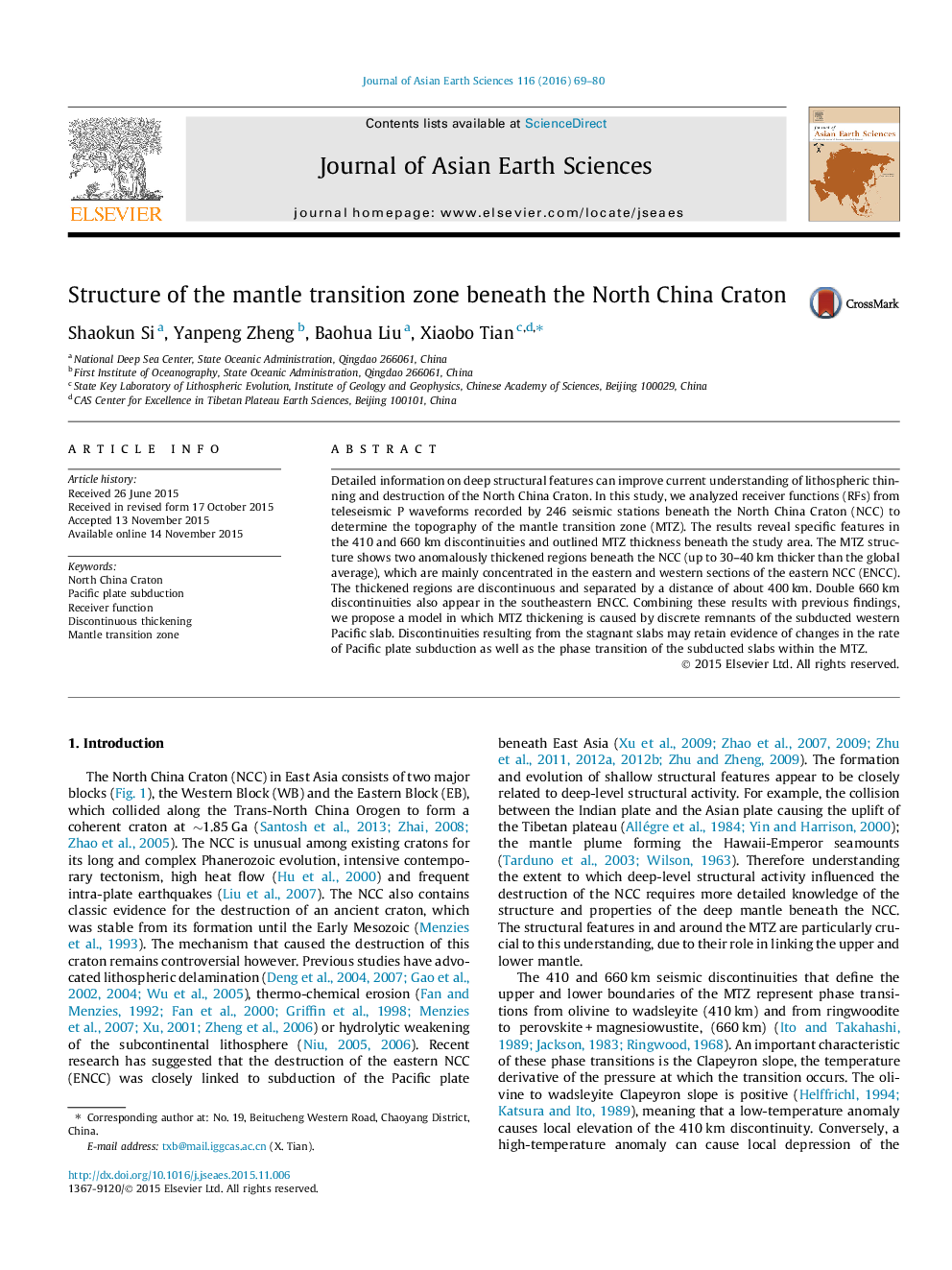| کد مقاله | کد نشریه | سال انتشار | مقاله انگلیسی | نسخه تمام متن |
|---|---|---|---|---|
| 4730254 | 1640355 | 2016 | 12 صفحه PDF | دانلود رایگان |

• Discontinuous thickening of the MTZ beneath the NCC was imaged by seismic data.
• A double 660 km discontinuity structure exists beneath the southeastern ENCC.
• Pacific plate subduction and trench retreat result in stagnant slab in the MTZ.
• Discontinuous thickening may be related to the subduction rate of the slab.
Detailed information on deep structural features can improve current understanding of lithospheric thinning and destruction of the North China Craton. In this study, we analyzed receiver functions (RFs) from teleseismic P waveforms recorded by 246 seismic stations beneath the North China Craton (NCC) to determine the topography of the mantle transition zone (MTZ). The results reveal specific features in the 410 and 660 km discontinuities and outlined MTZ thickness beneath the study area. The MTZ structure shows two anomalously thickened regions beneath the NCC (up to 30–40 km thicker than the global average), which are mainly concentrated in the eastern and western sections of the eastern NCC (ENCC). The thickened regions are discontinuous and separated by a distance of about 400 km. Double 660 km discontinuities also appear in the southeastern ENCC. Combining these results with previous findings, we propose a model in which MTZ thickening is caused by discrete remnants of the subducted western Pacific slab. Discontinuities resulting from the stagnant slabs may retain evidence of changes in the rate of Pacific plate subduction as well as the phase transition of the subducted slabs within the MTZ.
Journal: Journal of Asian Earth Sciences - Volume 116, February 2016, Pages 69–80